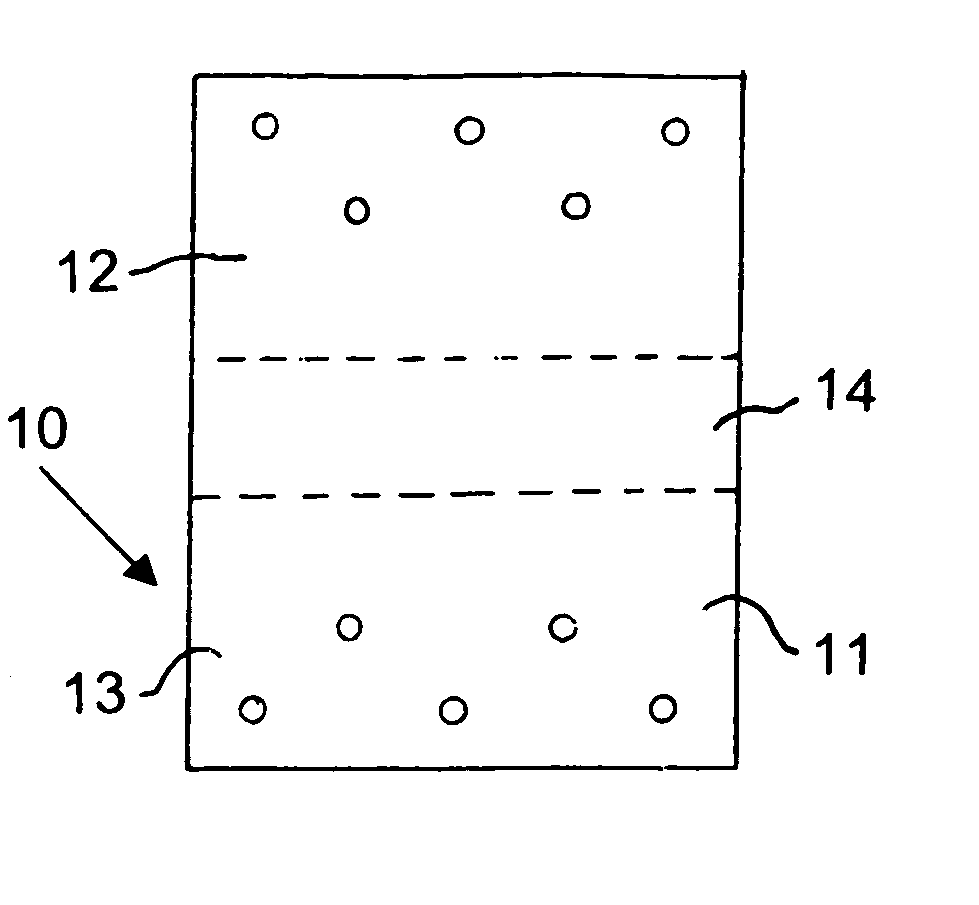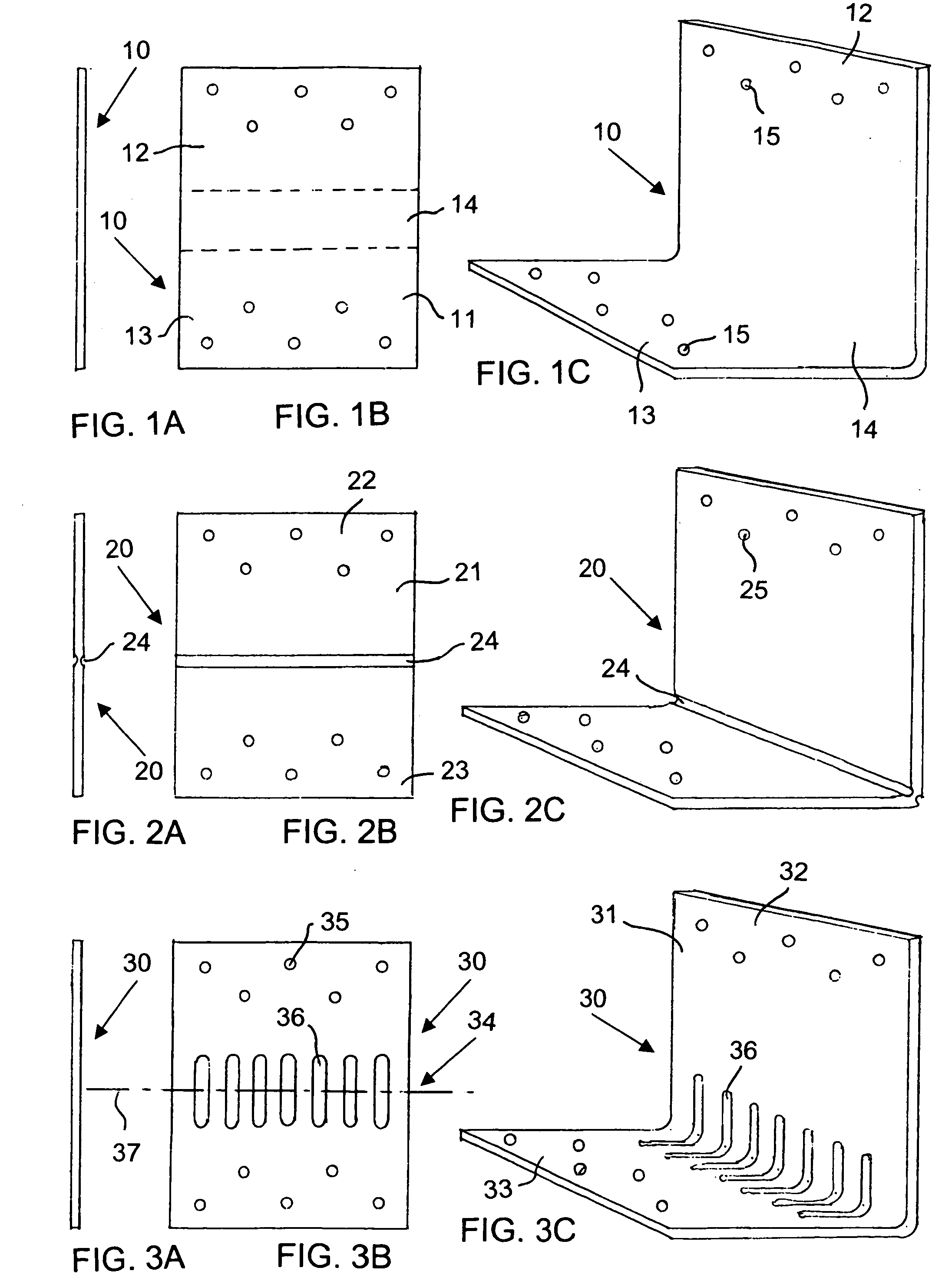Living hinge
a technology of living hinges and hinges, which is applied in the field of living hinges, can solve the problems of limiting the flexibility of living hinges, multi-part devices, and high cost of common articulating hinges, and achieves the effects of high cycle-life durability, high flexibility, and simple structur
- Summary
- Abstract
- Description
- Claims
- Application Information
AI Technical Summary
Benefits of technology
Problems solved by technology
Method used
Image
Examples
first embodiment
[0030] In the invention illustrated in FIGS. 4A, 4B and 4C, a living hinge 40 has attachment edges 42, 43 with attachment holes 45 formed therein. Through cutouts or separations 46 are formed or cut into the material of a hinge body 41 of the living hinge 40 in rows parallel to a hinging or flexing axis 47 at a flexing zone 44. The individual separations 46 of each row are offset relative to the individual separations 46 of adjacent rows. For example, the center of each individual separation 46 of one row may be aligned with a space between the individual separations 46 of the next row.
second embodiment
[0031] A living hinge 50, according to the invention shown in FIGS. 5A, 5B and 5C, has recesses or separations 56 scored, scratched, laser-cut or dug into the surface of the material of a hinge body 51 of the living hinge between two attachment edges 52, 53 having attachment holes 55. The individual separations 56 in a flexing zone 54 are formed or cut in rows parallel to a hinging or flexing axis 57 and are mutually offset.
third embodiment
[0032]FIGS. 6A and 6B show the invention, in which a living hinge 60 has attachment edges 62, 63 with attachment holes 65 formed therein. Recesses or separations 66 are scored, scratched, laser-cut or dug into the surface of the material of a hinge body 61 of the living hinge at an angle relative to a flexing axis 67 in a flexing zone 64. The angle may, for example, be 30 degrees, 45 degrees or any angle less than 90°.
[0033] It is noted that the desired effect may be accomplished with only one scoring or cutout or only one row of scorings or cutouts and that the scorings or cutouts are interchangeable in each of the embodiments of the inventions.
[0034] The angle (relative to the flexing axis), length, width, overlap and pattern of the separations, recesses or scores which are formed or cut within the material of the living hinge itself converts prior art tension and compression elements into improved function, torsion elements. These recesses, scores or separations are formed or cu...
PUM
 Login to View More
Login to View More Abstract
Description
Claims
Application Information
 Login to View More
Login to View More - R&D
- Intellectual Property
- Life Sciences
- Materials
- Tech Scout
- Unparalleled Data Quality
- Higher Quality Content
- 60% Fewer Hallucinations
Browse by: Latest US Patents, China's latest patents, Technical Efficacy Thesaurus, Application Domain, Technology Topic, Popular Technical Reports.
© 2025 PatSnap. All rights reserved.Legal|Privacy policy|Modern Slavery Act Transparency Statement|Sitemap|About US| Contact US: help@patsnap.com



